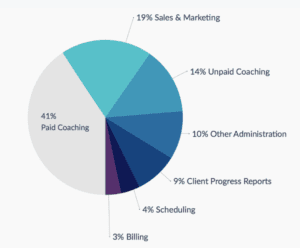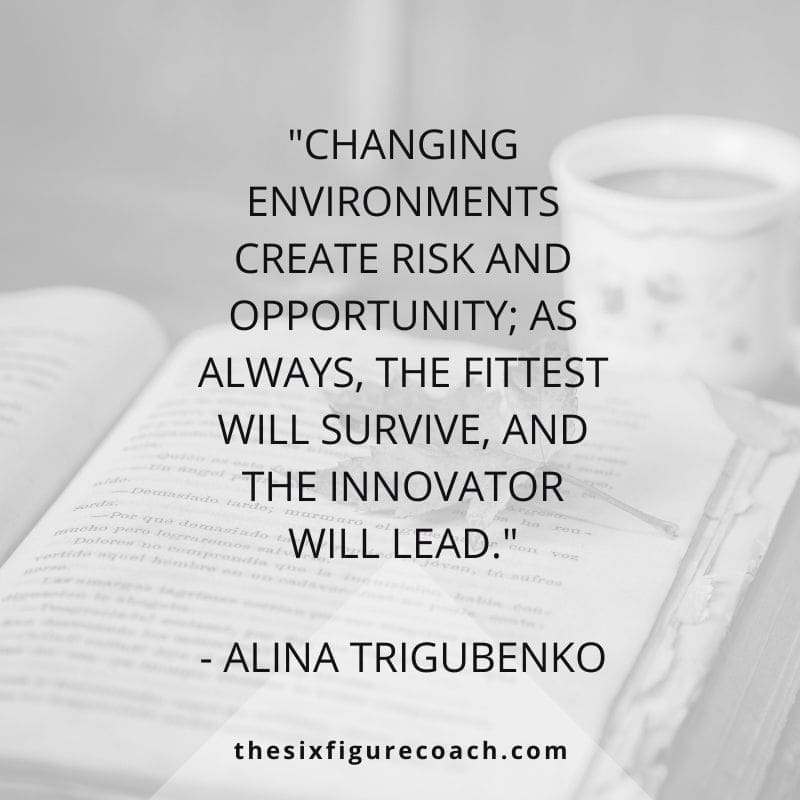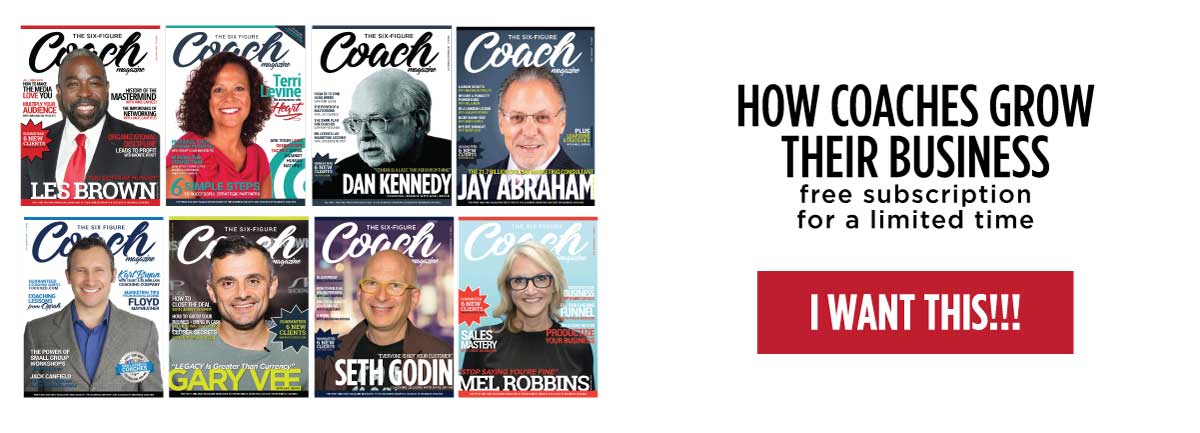How Corona Changed Coaching Forever By Alina Trigubenko
COVID has changed almost every aspect of our world, including the way people communicate and do business.
The coaching industry is no exception.
Hopefully, with vaccines, we are on the way to recovery, although this might take some time.
Regardless, this is a good time to look at what a post-COVID coaching world will look like.
Will things go back to “normal”? Is the 2020 work environment the “new normal”? Or are we steering toward an entirely different destination?
We surveyed our members to learn what they are expecting in a future world and how to prepare for it.
Five themes predominated:
1. Online Coaching Takes Center Stage
“Man [humankind] is a social animal,” according to Aristotle, and this is no less true today than it was two and a half thousand years ago.
Pandemic lockdowns and restrictions struck at the heart of our social needs.
Industries such as coaching, which relied heavily on person-to-person contact and rapport, faced this challenge more than most others.
Online options became the go-to solution for almost everyone.
Many coaches and clients value the convenience and flexibility brought by online coaching.
Even with the end to the pandemic potentially insight, some coaches think that online coaching will remain the default option in the industry.
Others point to the continued importance of in-person communication in “people businesses” like coaching. (Try to imagine 90s movie character Jerry McGuire motivating and bringing success to his client over Zoom).
We think the post-COVID world will be one where there will be a blend of in-person coaching when it matters to establish and maintain that personal connection, but where most day-to-day work will be performed virtually.
We also foresee rapid cycles of innovation and deployment with online tools to make virtual coaching as efficient and “personal” as possible; see point 5 below.
2. Rise of Niche Coaching
The COVID environment has led consumers to expect to find coaches and programs that are highly-targeted on their specific needs.
This has been driven by a number of factors. By disrupting a number of companies and industries, more providers have joined the coaching industry.
By pushing everyone (including coaches and clients) online and removing geography as a key consideration when choosing a coach, consumers of coaching services have almost infinitely more choices than they did in the past.
With expanded choice, customers are expecting to find and many do find coaches who specialize in their specific problem areas.
In a pre-COVID world, an impressive speaker on the conference circuit could recruit clients to more of a one-size-fits-all program through charm and force of personality.
This is much harder to do in a virtual environment, and even if and when we all start going to big conferences in-person again, the “genie” is out of the bottle.
Clients are becoming used to coaches who specialize.
3. Harder And Softer Coaching
As coaching has become more ubiquitous during the pandemic, consumers are expecting more from it.
No longer are most clients happy with “feel good” coaching; they want to develop specific skills or achieve specific goals in their life and a coach who is focused on those goals as well.
That’s the “hard” side, but what about the soft? Another implication of the pandemic and lockdown is greater prevalence and awareness of psychological wellness.
While treating mental illnesses should remain the province of mental health professionals, most coaches will need to take into account the “softer” side of clients’ development.
Coaches will need to continue to engage with clients’ feelings and emotions – and to express their own humanity to be relatable – even after COVID has left us.
In many ways, this is a benefit to the coaching industry as it allows providers to add more value. Coaches are not only helping clients answer “how-to” questions but also “why?” and “should I?” questions.
This only serves to make the coach an increasingly important person in a client’s life.
A related point is the is growing need for health and wellness coaching: one of the niches in a ‘niche coaching’ world anticipated above.
Without intruding on space best left for medical professionals, coaches are seeing clients becoming more self-aware of their physical and mental health than ever.
These clients are concerned about factors that make them susceptible to health risks, including stress, job and life satisfaction, and so on.
4. Ubiquity Has A (Reduced) Price
As noted above, online coaching is cheaper to provide.
This, plus economic disruption, plus pre-COVID trends, has brought more coaches into the industry.
In addition, coaching is no longer exclusively for the very wealthy or successful; middle managers, entrepreneurs, and freelancers make up a growing share of coaching clients, but they are not able to pay the same rates that Fortune 500 HR departments formerly paid to assist their C-Suite.
All of these factors together are putting downward pressure on prices.
These trends appear to be irreversible.
While there are many things individual coaches can do to increase their income, such as e-courses, group coaching options, and automation, coaches should expect that the “average” price for a coaching engagement will decrease, at least relative to the cost of other professional services.
5. We Are All Technologists Now
Related to the previous point as well as the overall trend toward online coaching, we see increasing use of technology for coaches in two areas:
1.Delivery of services. Zoom and its equivalents have already changed the game for group coaching.
Platforms such as awarenow.io provide a high-quality branded experience even for customers of small independent coaches.
And so on. These tools and new ones will only continue to evolve to make technology-enabled coaching increasingly effective.
2. Back-end automation. The average coach spends more than half of their time on activities other than coaching; see infographic below.
As engagements get more personalized and complex, the back-end administration burden will continue to rise. Technology can provide the solution.
Not technology haphazardly applied that leads to a situation where one is “drowning in tools” that do not integrate with each other and leave gaps or contradictory information.
Rather, integrated coaching-focused platforms where your billing, scheduling, leads, messaging, video and audio tools, e-courses, resources, and so on are all in one place and thoughtfully designed for efficiency.
What could your coaching business do if you were able to liberate one-sixth of your time?
Conclusion
Coaching in a post-pandemic world will most likely be a synthesis between the pre-2020 environment (which was itself evolving) and the 2020 changes after the COVID “Big Bang”. Fortunately, the future of the coaching industry seems assured; virtually all experts expect coaching to play an increasing role in our lives.
Changing environments create risk and opportunity; as always, the fittest will survive, and the innovator will lead.
Infographic: How Coaches Spend Their Time



About Alina Trigubenko
Awarenow was founded by Alina Trigubenko, a coach who was frustrated with the limitations of digital tools to support independent coaches and scaling coaching practices.





